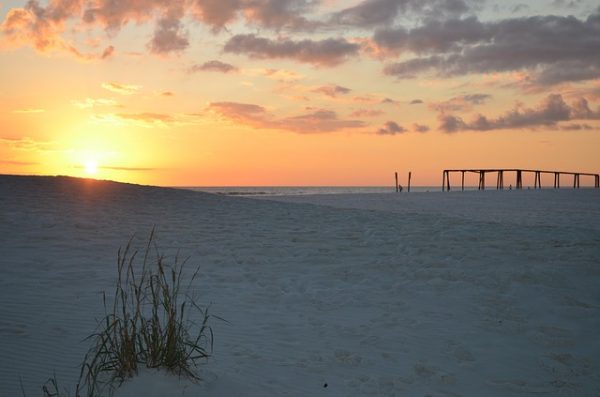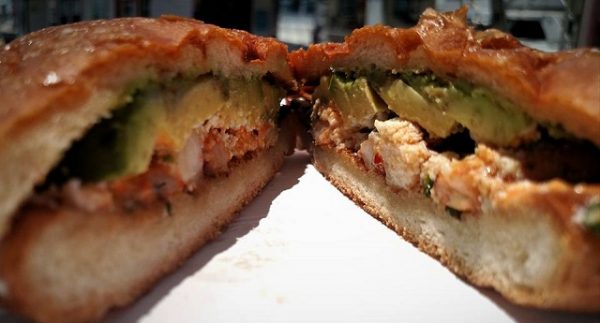In Panama City Beach, Florida, you stroll along miles of white sand beach, gazing out on the Gulf of Mexico. The water is calm and warm. You hear children laughing and seagulls crying. You smell the ocean brine. The sand is soft, stretching for miles, reflecting the sun.

On TripAdvisor, you were informed the beach is one of the 25 most beautiful beaches in the US. But that’s not why you’re here. You’re here for the lobster—not just any old lobster—the lobster you’ll find at Panama City Beach’s annual Lobster Festival and Tournament. Hosted by Schooners Last Local Beach Club for seven days during mid-September, this lobsterfest is the biggest one in the Southeast. There’s music, a sand sculpture competition, a lobster diving competition, and most importantly, all the tender lobster your mouth desires. Thousands of people are here for the same purpose, and best of all, your money goes to the Florida Aquatic Marine Institute and the Toys for Kids Foundation. For seven days, you’re in a lobster-lovers paradise.
While in Panama City Beach, you check out some of the other attractions. There are plenty of delectable seafood restaurants besides Schooners, of course. Capt. Anderson’s has the most succulent grilled bay shrimp, while Hunt’s Oyster Bar boasts a seashell drive, fabulous decor, and cajun-style oysters that are among the best. You’re all about the seafood around here because there isn’t any fresh seafood up north where you’re from. At Just the Cook, which sits on a dock swaying slightly above the waves in St. Andrew’s Marina, you chomp into some of the most amazing shrimp tortuga you’ve ever had. The server brings you a free pint of beer. Voila! This is about as good as it gets.

Strange—everywhere you go, you note the prices for large shrimp are extremely high, or restaurants simply don’t have them on the menu. Meanwhile, small shrimp abound and are relatively cheap. You ask a local and find out it’s because of this year’s Gulf of Mexico dead zone, which is about the size of New Jersey—the largest anyone’s ever seen. The dead zone is an area where pollutants stifle the sea’s oxygen level. The dead zone kills fish, and affects the size of shrimp. This, in turn, affects seafood prices, but not as much in Panama City Beach as westward, where the dead zone extends further out to sea.
This isn’t the only problem you learn about. You feel lucky to be in Florida when you are, because in the future conditions might not be so hospitable. It’s an odd, scary feeling. East of here, Jacksonville is a hotspot for rising sea levels; due to climate change, the sea level is rising at about twice the rate in Jacksonville as it is elsewhere. If climate change doesn’t slow down, Panama City Beach won’t be immune from the additional 20 inches of water pouring in from the ocean by the year 2050.
Furthermore, the seafood you’re eating is precious because plastic is choking the ocean’s marine life. More than 8 million tons of plastic end up in the ocean each year. In places like the Galapagos Islands, tourism and local education now focus on minimizing plastic waste in cooperation with Wildaid and the Galapagos National Park Service. That’s because marine scientists found 38 million pieces of plastic on the beaches of Henderson Island, an uninhabited island near the Galapagos in the South Pacific. We knew about plastic vortexes before, but now this is concrete proof the plastic doesn’t just remain at sea.
Before your trip to Panama City Beach, you pretty much just wanted to eat a bunch of seafood —primarily lobster—and have a good time. But your trip here isn’t merely a mouth-opener, it’s an eye-opener. For the rest of your time in Panama City Beach, you’re determined to pollute as little as possible. You cut out the plastic straws and water bottles, you take public transportation or walk, you stop chewing gum with synthetic rubber in it, and you stop using facewash, which has more than 300,000 plastic beads in it. And you have a great time! You feel really good about the time you spend at Florida’s biggest lobsterfest. You’re giving back to the local economy and you’re minimizing waste. And let’s face it: the food is delicious.
Featured image | paella / Pixabay
[alert type=alert-white ]Please consider making a tax-deductible donation now so we can keep publishing strong creative voices.[/alert]
